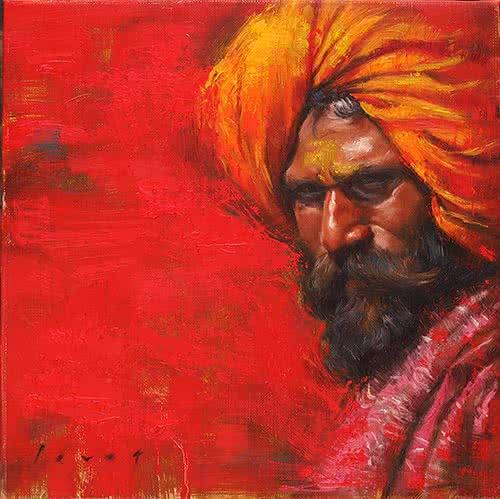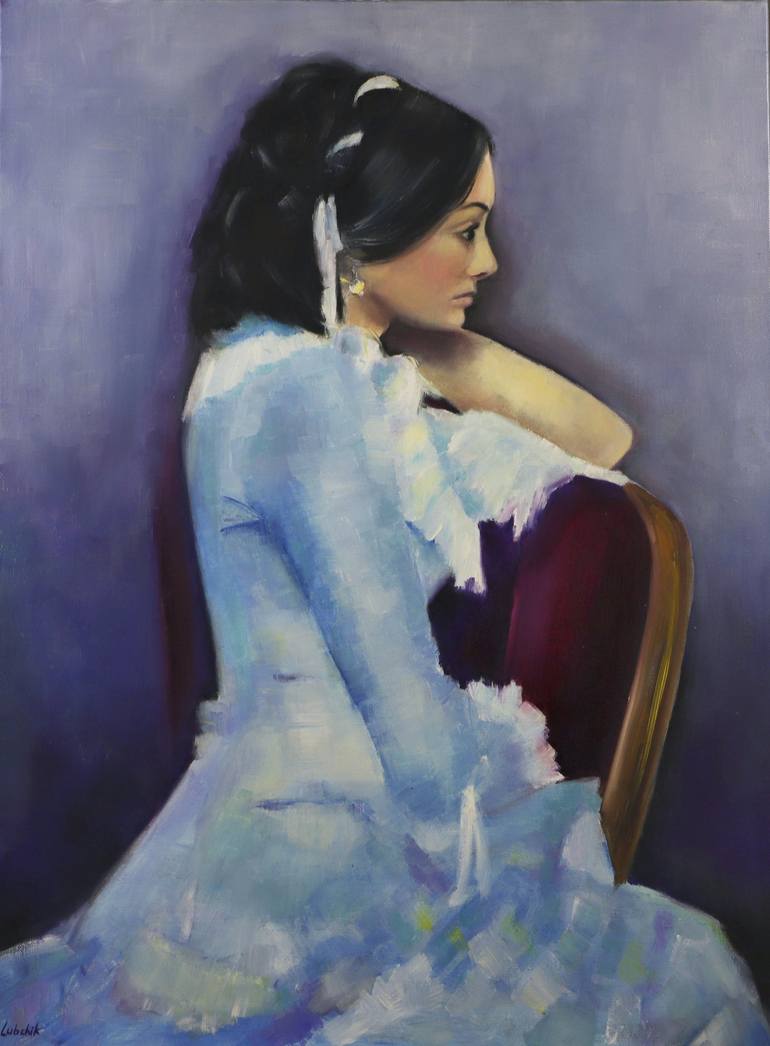The Development of Figurative Oil Paint: Comprehending Its Historical Value and Modern Interpretations
The development of metaphorical oil painting offers as an engaging lens through which to take a look at the interplay between creative expression and historical context. Contemporary musicians, drawing from this rich heritage, are now reinterpreting the human figure in methods that challenge conventional narratives.
Beginnings of Figurative Oil Paint
The beginnings of metaphorical oil painting can be mapped back to the very early Renaissance in Europe, especially in the 15th century. The advancement of oil paint permitted for greater deepness of shade and information, improving the realism and vibrancy of their job.

In this transformative period, numbers were usually shown within contextually rich atmospheres, showcasing not just their physical characteristics yet additionally their mental states. Pioneers such as Jan van Eyck and Titian used the tool's versatility, using layering methods to accomplish luminosity and appearance. This technology facilitated the representation of detailed fabrics and the nuances of skin tones, contributing to the growth of portrait and narrative scenes.
Furthermore, the Renaissance emphasis on humanism fostered an appreciation for individualism, which subsequently affected artists to develop even more relatable and dynamic numbers - figurative oil painting. Because of this, metaphorical oil paint emerged as a powerful car for narration and emotional interaction, laying the groundwork for future imaginative activities and styles
Trick Historical Motions
Substantial historical activities have shaped the advancement of figurative oil paint, each adding distinct ideologies and techniques that increased the medium's opportunities. The Renaissance noted a turning point, highlighting realistic look and the human kind, with artists like Leonardo da Vinci and Michelangelo pushing the limits of anatomical precision and perspective. Following this, the Baroque age brought dramatic contrasts of light and shadow, exhibited by Caravaggio, that infused spiritual motifs with intense emotionality.
The 19th century presented Romanticism and Realism, where artists such as Delacroix and Courbet tested classical ideals, concentrating on individual expression and everyday life. The advent of Impressionism further changed the medium by stressing the effects of light and color, bring about a separation from standard depiction.
In the very early 20th century, motions like Expressionism and Cubism redefined figurative painting through abstraction and the exploration of psychological depth. Each of these motions not only mirrored the social changes of their times yet likewise laid the groundwork for modern interpretations. The interplay in between these historic motions has produced an abundant tapestry of designs and philosophies, influencing contemporary artists in their quest of recording the human experience on canvas.
Methods and Products Evolution

Throughout the Baroque duration, strategies such as chiaroscuro and sfumato arised, boosting the emotional vibration of figurative structures. Musicians began to try out lusters and impasto, controling appearance and luminosity. By the 19th century, developments like making use of pre-mixed paints in tubes revolutionized access, permitting artists to paint en plein air and capture the fleeting effects of light.
The 20th century observed the introduction of synthetic pigments and mediums, which increased the palette and modified the consistency of oil paints. In addition, the exploration of new application methods, such as combination blades and brushes of differing stiffness, more varied imaginative expression. Collectively, these developments reflect the advancing relationship in between products, strategies, and the creative vision fundamental in figurative oil painting.

Contemporary Analyses
Contemporary interpretations of metaphorical oil paint reflect a vibrant discussion in between custom and advancement, where artists test established standards and explore diverse themes. This development shows up in various methods, as modern artists mix classic strategies with modern principles, frequently dealing with social, political, and personal stories.
Many specialists attract inspiration from historic jobs, yet they infuse their pieces with modern viewpoints, utilizing the human form as a vehicle for discourse on gender, identification, and culture. Artists progressively explore abstraction, distortion, and multimedias, which permits a wider analysis of the figure and its context.
In addition, the usage of vivid shade schemes and unusual structures often offers to interfere with typical seeing experiences, prompting important visit this site right here engagement from target markets. This change in focus prolongs beyond visual appeals; it shows a growing awareness of the complexities of human experience in an interconnected world.
As figurative oil painting remains to progress, it stays a vital tool for checking out the subtleties of contemporary life, personifying both a respect for heritage and a dedication to dynamic idea. The result is an abundant tapestry of expression that reverberates with the intricacies of the modern human problem.
Influence On Modern Art
The effect of figurative oil paint blog here on contemporary art is extensive, as it has constantly inspired a myriad of artistic movements and methods throughout the 21st and 20th centuries. From Expressionism to Surrealism and beyond, the expedition of the human number has continued to be a central style, enabling musicians to convey complex emotions and stories. This focus on figurative representation has actually led to a re-examination of traditional methods, causing innovative techniques that blend realistic look with abstraction.
Moreover, modern artists have welcomed figurative oil paint as a method to resolve political and social concerns, using the medium to challenge understandings of society, identification, and gender. The renewal of rate of interest in figurative operate in recent years shows a longing for connection in a significantly electronic globe, where human experience and feeling are paramount.
In addition, the discussion between metaphorical oil painting and modern art is apparent in the works of musicians such as Kehinde Wiley and Jenny Saville, that attract on historical references while infusing their items with modern significance. Eventually, figurative oil paint remains to form and redefine modern imaginative expression, underscoring its long-lasting significance in the art globe.
Conclusion
The evolution of metaphorical oil painting highlights its historic value and adaptability across i loved this different creative activities. From the naturalism of the Renaissance to the emotive expressions of the Baroque and the innovative methods of modernity, this medium has constantly changed. Contemporary interpretations mirror vivid shades and non-traditional make-ups, fostering crucial engagement with political and social motifs. Eventually, metaphorical oil paint stays an essential tool for exploring the human experience, resonating greatly in today's electronic landscape.
The advancement of figurative oil painting offers as a compelling lens through which to analyze the interplay between artistic expression and historic context.Substantial historic motions have formed the evolution of figurative oil paint, each contributing unique ideologies and strategies that broadened the tool's possibilities.As historic motions formed the trajectory of metaphorical oil painting, the products and methods utilized by musicians have also undergone considerable transformations. figurative oil painting.The influence of figurative oil paint on contemporary art is extensive, as it has continually motivated a myriad of imaginative activities and methods throughout the 20th and 21st centuries.The advancement of figurative oil painting emphasizes its historical importance and versatility across various artistic motions
Comments on “The Evolution of Art: A Comprehensive Guide to Figurative Oil Painting”